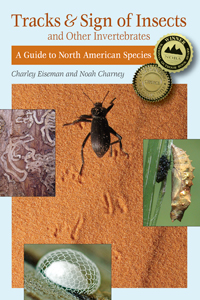This time of year I’m always on the lookout for witch hazel (Hamamelis virginiana) flowers. One last burst of life before everything shuts down for the winter. They usually start to appear in the middle of October, but this year I kept checking for them and didn’t see any until the 26th.
I’ve always been curious what pollinators witch hazel flowers are meant to attract, appearing as they do at a time of year when there is hardly anything flying. The only insect I can remember seeing on a witch hazel flower in the past is this drone fly (Syrphidae: Eristalis tenax), photographed seven years ago in Colchester, VT:
The flowers are fairly mildly scented, generally a pleasant smell, but there is an undertone that reminds me of red trillium (Trillium erectum), which is supposed to smell like something dead, attracting the sorts of flies that are into that sort of thing. I’ve never heard anyone else suggest this about witch hazel flowers, but on my walk on the 26th I saw a fungus gnat (Sciaroidea) and a vinegar fly (Drosophilidae) visiting a couple of flowers, which seemed to support my suspicion. I didn’t have a camera with me that day, but I planned to check on the flowers over the next few days and photograph whatever was visiting them. But then this happened:
And then this:
Apparently this isn’t so much of a problem, though. This morning, when the power came back on, I did some reading, and I learned that even though the petals are already starting to fade (as is evident in the last photo), the flowers will still be open for business for a long time. According to Shoemaker (1905), “Pollen is ripe and begins to be shed in the latter part of October, and is shed from that time on into the winter, as the flowers keep opening with each return of warm weather, even as late as January.” I’m not sure if the nectar is available for this long, but I don’t see why not. So it seems like witch hazel makes up for its unusual flowering time by having its flowers remain viable for much longer than most flowers do–increasing the chances of some stray insect happening by and helping out with pollination. And maybe it’s hedging its bets on what kind of insect that might be, by producing flowers that are a little bit sweet and a little bit putrid. Anderson and Hill (2002) collected 298 insects visiting witch hazel flowers in Connecticut; of these, 216 (73%) were flies, and among the flies, 42% belonged to a species of dark-winged fungus gnat (Sciaridae) in the genus Bradysia. The other insects comprised members of 23 other fly families, 53 wasps and bees representing 18 different families, eight beetles in seven different families, 15 minute pirate bugs (Anthocoridae), two assassin bugs (Reduviidae), two aphids (Aphididae), two leafhoppers (Cicadellidae), a brown lacewing (Hemerobiidae), and a thrips (Thysanoptera).
While I’m on the subject of witch hazel, here’s another odd thing about it: it’s the only woody plant I can think of that flowers at about the same time the seeds are dispersing. In my journal from back when I was keeping better track of these things, I recorded seeds dispersing in the first week of October. Witch hazel disperses its seeds by ejecting them forcefully from the fruits, shooting them up to twenty feet or more. This year I haven’t seen any open fruits yet, and this makes sense since it has been raining so much–the capsules open when they are dry. Shoemaker reported that fertilization in the flowers takes place about the middle of May, after a dormant period of several months; it then takes the entire growing season for the seeds to develop and mature.

A witch hazel fruit (right), not to be confused with the gall of Hamamelistes spinosus, the spiny witch hazel budgall aphid (left).
References:
Anderson, Gregory J. and James D. Hill. 2002. Many to Flower, Few to Fruit: The Reproductive Biology of Hamamelis virginiana (Hamamelidaceae). American Journal of Botany 89(1):67-78.
Shoemaker, D. N. 1905. On the Development of Hamamelis virginiana. Botanical Gazette 39(4):248-266.








Answered my questions! : )
Beautiful photos! I also set out on a mission this year to identify what pollinators visit the witch hazel flowers – I saw what looked like tiny gnats or maybe flies. Thanks for shedding some more light!
I have wondered about this for years! I love witch hazel and have planted half a dozen in my inner-ring suburban back yard. I will have to watch closely in the future to see if I can spot the pollinators!
A naturalist friend just sent me the information about your blog this evening – I’ll certainly enjoy reading it!